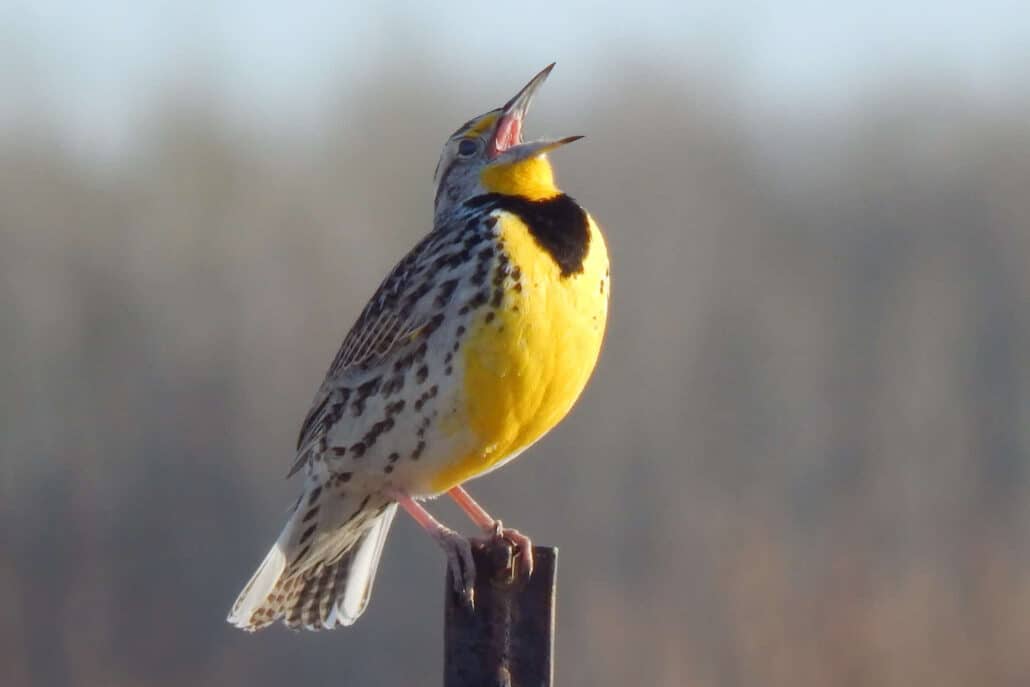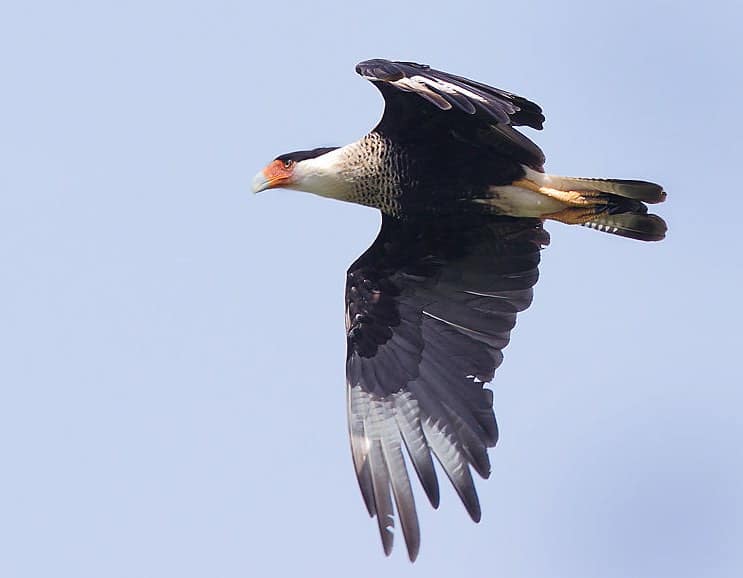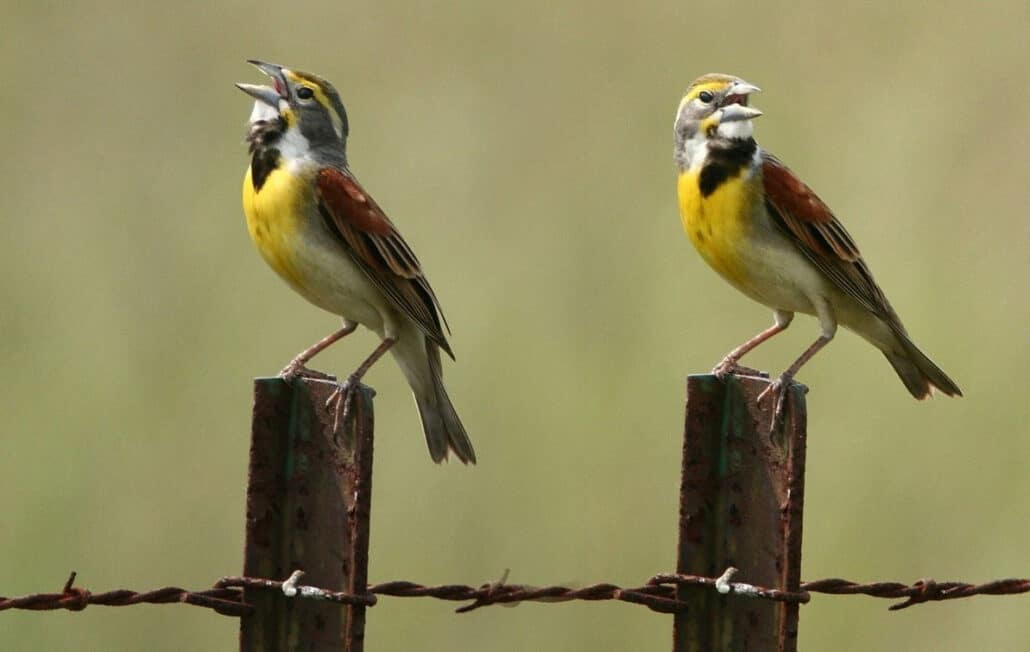A raccoon suddenly loomed in the headlight beams of my rental car. The animal was casually ambling down the centerline, surrounded by predawn darkness and the solitude of Nebraska stubble fields.
On my drive north from Grand Island that March morning, I had encountered no other vehicles or signs of life, so the raccoon provided a welcome spot of company. As I carefully steered past it, I had to smile. This is the part about birding that is hard to explain to nonbirders. How can anyone rouse herself from a warm bed at 3 a.m. and drive through the cold and lonely darkness—with all of the eager anticipation of a kid on a field trip—just to see birds?
Predawn expeditions were par for the course on that trip. I had already spent several mornings creeping up to blinds along the North Platte River, where I had then sat in the dark—hot coffee at hand to help chase the chill—and listened to the bugling calls of thousands of migratory sandhill cranes “roosting” in ankle-deep water just a few yards away.
When dawn broke, casting light on the meandering river and the elegantly beautiful cranes—some of them courtship-dancing with exuberant leaps and outstretched wings—I realized that there was nowhere else I wanted to be at that moment. My travel alarm clock had jarred me awake at an ungodly hour, I had stumbled over rough ground to reach the unheated blind, and my feet were now slowly turning to ice. But the thrill of seeing cranes in their natural state more than made up for any personal discomfort.
It’s a birding fact of life: If you want to witness such miracles as dancing cranes, you sometimes have to brave the cold and get up before the chickens.
And so it was that I headed north in the dark, dodging raccoons and checking my map. Once again, I had gotten up in the wee hours, this time to drive to a ranch near tiny Burwell, in the Nebraska Sandhills. Acting on a tip the day before, I had called the ranch and confirmed that, yes, I could count on being able to observe two particular bird species that I had long wanted to see, performing their springtime dances on the ranch property. But I had to arrive before dawn.
“No problem,” I said, and set my alarm clock.
Meet Me at the Lek
Early spring used to be the slow season at the Switzer Ranch, which, besides raising cattle, also offers lodging and outfitting services. At some point, it occurred to the owners that an annual springtime event on their property—one that they had always taken for granted and had overlooked as a potential draw for visitors—could attract birders like me. Now, the ranch’s former “slow season” is one of its busiest, as birders arrive from all over North America and beyond to witness some of nature’s most dramatic displays: the courtship dances of the sharp-tailed grouse and the greater prairie-chicken.
Several leks of both the grouse and the “chicken” are located on the ranch. From mid-March until the end of April, visitors are escorted to the leks of both species for excellent close-up views of the strutting birds, visible from stationary yellow school buses serving as blinds—followed by a hearty breakfast back at the guest lodge.
I had visited some leks in the past, both in Trinidad (white-bearded manakin) and in my own state of Washington (sage grouse), and was already familiar with the phenomenon. A lek (also called an arena or booming ground) is a communal breeding-display area, often used year after year. Males of certain species gather at leks to show off their prowess and attract females, who are watching from the sidelines, for breeding. In the case of grouse, the dominant male displays at the center of the lek and gets to mate with the highest percentage of females. To maintain his status, the alpha male must be a dancer extraordinaire.
As a small group of us quietly entered one of the ranch’s bus blinds just after dawn, we could see through the windows on the other side that 15 to 20 male sharp-tailed grouse had already gathered at the lek and were preparing to dance. We settled onto the bus seats, focused our binoculars and spotting scopes on the field of short, dry grass, and took in the show.
Let the Dancing Begin
Grouse, prairie chickens, and ptarmigans make up a worldwide subfamily of 17 species of gallinaceous, or chicken-like, birds. They are typically heavy-bodied with short, rounded wings, and they spend most of their time on the ground, depending on camouflage, running, and short bursts of flight to elude predators.
The males of some of these species have evolved courtship displays that include strutting, erecting or flaring specialized feathers, and creating booming or popping noises by means of inflatable air sacs located in their necks.
A lek of proud males fully engaged in their dramatic breeding display is a sight to behold. Native Americans of the Great Plains were the first to admire the elaborate displays of the sharp-tailed grouse, even going so far as to create their own dance, with accompanying feathered regalia, that mimicked the bird’s choreography. Indeed, as I peered out from the bus blind, I instantly recognized the grouses’ moves, having already seen them expertly performed at tribal gatherings.
With his sharply-pointed tail aimed skyward, the male grouse spreads his wings, lowers his head, and then rapidly stamps his feet as he struts forward or moves in a circle. In synchrony with these actions, he inflates his purple neck sacs, rattles his tail feathers, and emits a variety of calls that include weird, unearthly hoots and deep pigeon-like coos.
While the males tried to out-dance each other outside our bus, the plain-feathered females watched the goings-on from the grassy edges of the lek, blending with their surroundings. Now and then, one or two females would move into plain sight, their appearance creating an explosion of intense dancing among the males.
Female behavior at the lek can be deceiving to human onlookers. Although a female grouse may seem to be nonchalantly pecking at seeds on the ground, oblivious to the dancing commotion around her, she is all the while sizing up the males and preparing to make her important choice. For it is the female—and not the flamboyant male showing off his dance moves—that will decide whose DNA gets passed to the next generation.
A Party Crasher
As we watched from the bus blind, every grouse at the lek suddenly leapt into the air and flew on whirring wings to some taller grass about 100 yards away. There they hunkered out of sight. I exchanged puzzled glances with my fellow birders, and we all shrugged our shoulders. What had caused the abrupt, mass exodus?
Just then, a large shadow floated across the lek and we all looked up. The party-crasher was a northern harrier sailing overhead, its predatory shape against the gray sky a signal for the grouse to scatter.
It took only a minute or two for the grouse to return to the lek, once the harrier had continued on its way and the danger had passed. Like a homing beacon, the lek—and the serious business being conducted there—pulled the birds back, and the dancing recommenced as if nothing had happened.
That exodus-and-return, performed with speed and efficiency, was a dramatic demonstration of adaptation and survival. It was as if an invisible stage director had called out a warning: “Aerial hunter! Take cover!”—then signaled the all-clear: “Danger gone! Now get back to the lek and pick up where you left off!”
An Echoing Reminder
Although my companions and I had dressed warmly, we were nevertheless stiff with cold as we climbed down from the bus and walked back to the ranch van. Our driver turned up the heater, and we thawed out a bit as we drove cross-country over grass stubble, frozen ruts, and a light dusting of snow, to a second lek, this one occupied by greater prairie-chickens, and entered another bus blind.
I will admit that I got teary-eyed with wonder at the sight of my first “chickens” that day. These birds are living icons of an era of wilderness and natural abundance that we will never see again on this continent.
Before Europeans arrived here to “tame” North America, vast prairies—a sea of grass—covered the Great Plains, home to bison and bobolink, grizzly bear and prairie-chicken. Over time, habitat destruction, pesticides, and hunting wiped out most of the greater prairie-chickens, which formerly occurred in 33 states and Canadian provinces, leaving remnant populations scattered here and there in the north and central Midwest. (The lesser prairie-chicken, found farther south, has become even more rare and local.)
The booming of a prairie-chicken’s yellow air sacs can be heard for a mile or more and has been described as “an echoing reminder of a time when the sound was a prairie-wide harbinger of spring.” So, it was with a special thrill that I peered out at the displaying males on their booming ground, listened to their mysterious sounds, and marveled at their intricate dance. They drum their feet, raise long feather tufts on their heads, inflate their air sacs, and sometimes leap into the air with a loud cackle. Some of the males occasionally make runs at each other, mock charges meant to intimidate rather than do harm.
As with the grouse, the female “chickens” watch from the sidelines and choose their mates. The best dancers win most of the girls. At one lek under study, two males were recorded as having performed 70 to 90 percent of the copulations.
For both the grouse and the “chicken,” once mating has occurred, the sexes drift apart, and the birds resume their solitary lifestyle until the next spring. The female builds a nest—a simple depression in the ground, lined with leaves, grass and ferns—lays about a dozen eggs, and then incubates the clutch and raises the chicks on her own. If she has mated with the best dancer, some of her male progeny may one day find themselves defending center stage and dancing their hearts out.
As Old as the Prairies
As we drove back to the lodge for a hot breakfast, I knew that we had seen something quite special that morning. We had witnessed a springtime ritual as old as the prairies, as wildly beautiful as clouds racing across a Midwestern sky, and as spiritually moving as seeing chicks breaking out of their shells to complete another circle of life.
May these living symbols of the Great Plains—the sharp-tailed grouse and the greater prairie-chicken—dance on forever.




